Ready for The Future! -
Our Port of Thunder Bay
By Sherry Hanes (April 2020)
What’s all the excitement about?
There are numerous, interesting details about our Port of Thunder Bay so, visit with us for a few moments in these pages, to discover the latest changes that are presently occurring in our port, changes that not only exceed current service needs for International H2O Transportation, but also keeps our port constantly viable, contributing to our economy and economic development, and ensuring the stability for future economic growth.
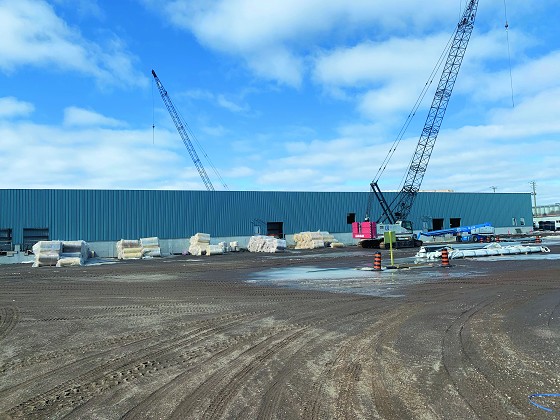
The Reconfiguration for Port Expansion Project.
PERPARING FOR THE FUTURE.
Port of Thunder Bay is proud to partner on this $15 million dollar project with the National Trade Corridors Fund and the Northern Ontario Heritage Fund Corporation.
In July, 2018, The Honourable Marc Garneau, Minister of Transport, and the Honourable Patty Hajdu, Minister of Employment, Workforce Development and Labour, announced a major investment of $7.5 million for improvements to our port’s infrastructure, that will address helping businesses move their goods to market. With an investment of $1 million through the province's Northern Ontario Heritage Fund Corporation (NOHFC), Thunder Bay Port Authority is building on its Keefer Terminal operations.
Contractors for this project: Tom Jones Corporation Construction General Contractor, WSP: Design, Engineering consulting, Environmental consulting, Planning, Professional services, North West Installations Inc., for metal fabrications manufacturing, M.A.C. Rail Contracting and PNI Contracting, all of Thunder Bay, were proud to be working together on this project, envisioning the great contribution we are working towards for our future.
The project involved the removal of an obsolete building to create a larger loading area and constructing an additional, new 50,000 square-foot, heated, storage facility that will allow the port to handle more goods.
The plan to develop and proceed with terminal reconfigurations for our Port, was estimated at a cost of $15 million dollars. The port regularly handles wind turbines, mining equipment, structural steel, and electrical infrastructure, among other diverse cargoes. The project complements previous investments in the terminal including a Liebherr Mobile Harbour Crane and adjacent intermodal yard and top-lifter. In addition, Greenlit, the Terminal Reconfiguration Project includes 2,800 feet of upgraded rail track. Reconfiguring of the track improves cargo-handling efficiency to accommodate expansion in shipping, staging and storage. The expansion also includes a net increase of 18 rail car spots, new rail lay down areas, rebuilding the rail yard that offers superior rail clearance for both CN and CP, heading to other Western ports. And, as mentioned earlier, the new 50,000-square-foot, heated warehouse will replace the aging on-dock storage shed, improving the efficiency of cargo flow and safety at the terminal. The new warehouse can accommodate fabrication and light manufacturing and will be ready in early 2020. The new Laydown expansion area, encompassing 6 acres, was completed in summer 2018.
The Keefer Terminal complex – a marine warehouse/storage/intermodal facility – handles cargo destined for Western Canada and serves the major industries in Northwestern Ontario.
The Keefer building was built in 1962 as a seasonal facility and of the 550,000 square feet of warehouse space only about 80,000 is heated, so the additional new warehouse will help to attract new business, more value-added work such as more highly technical electronics.
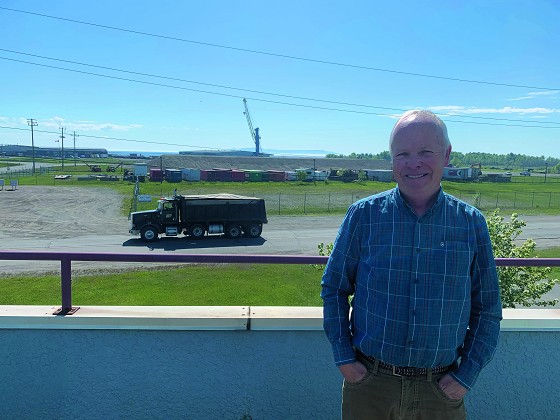
In an earlier interview with Port of Thunder Bay CEO, Tim Heney, Mr. Heney expresses:
“We have been working on this project for 12 years now. It will include 8 more car spots, new rail lay down areas, rebuilding our rail yard and a new heated warehouse, building more capacity for shipments.”
“We are getting into pipe as well as steel shipments. Our imports are from Europe. The new warehouse will help to attract new business, more value-added work such as more, high tech like electronics. The total cost of the expansion is $15 million. We have 150 jobs at Keefer Terminal and 40 directly in the marine industry.”
Angie Bolt of PNI Contracting Ltd., Thunder Bay, explains: “The first phase of P.N.I. Contracting Ltd.'s role in the new cargo shed project comprised of the removal of an existing septic field, grubbing and clearing the specified site, placement of compacted fill to prepare the pad for the future 50,000 sq. ft. cargo shed and the installation of a 50,000 m3 preload – equivalent to 4000 tri-axle truck-loads of granular – all in an eight week period in the fall of 2018. The following spring P.N.I. was awarded a separate contract to remove the pre-load and create a variety of laydown areas and parking lots with the granulars hauled to the site the previous fall. Once again, this project had a tight turnaround, just 6-weeks-time to accomplish the contract goals. We would like to thank all our subcontractors and the granular supplier, R.A. Milne Crushing and Screening, who helped make this project a success.”
Jeff Chuchmuch, of M.A.C Rail, had this to share with Thunder Bay Business Magazine, “We at M.A.C. Rail were very grateful for the opportunity to be a part of the Port of Thunder Bay’s expansion last fall. Our portion of the expansion consisted of preparing the grade for the track which was completed by Pete’s Backhoe Service. Building two number 10 115lbs switches and approximately 3000’ of track alongside the new lay down areas the port had previously prepared. Our project lasted 6 weeks and finished on schedule.”
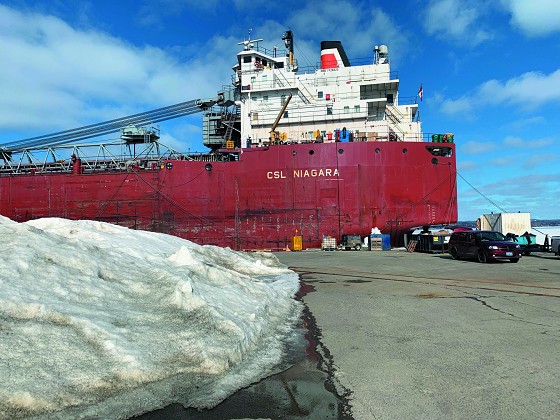
With the shipping season opening this month, we are right on schedule with the reconfiguration. The 2020 shipping season will start this week in the Port of Thunder Bay following the arrival of the Canadian Icebreaker Samuel Risley, on Tuesday, March 24. Upon ice break-out, three vessels docked for the winter at Keefer Terminal will shift to grain elevators to load. Several more Canadian vessels are set to arrive in port later this week after the Soo Locks open as scheduled on March 25. Ice conditions in the Port are favourable compared with recent years. The opening of marine shipping to Thunder Bay Port elevators will help alleviate the largest winter carryover of grain in Canada since 2014. This year's backlog is the result of a strong 2019 harvest and the impact of rail blockades throughout the country earlier this winter.
The Port had its strongest season in five years in 2019. Grain shipments accounted for nearly 8.0 million of the overall 9.3 million metric tonnes of cargo shipped from Thunder Bay during the season.
The quality of Canada's transportation infrastructure and the efficiency of the country's trade corridors is key to the success of Canadian firms in the global marketplace. Shipping-related activity contributes an estimated $370 million annually to Thunder Bay's economy and directly employs 900 people.
The Economic Impacts of the Great Lakes - St. Lawrence Seaway System Cargo shipments on the Great Lakes-Seaway system generate $45 billion of economic activity and 238,000 jobs in Canada and the U.S. From the earliest days of European settlement, the Great Lakes and St. Lawrence River have been utilized as a means of transportation. Great Lakes cities were founded as trading posts along a vast marine highway that facilitated commerce in an era pre-dating railroads and highways. This relationship to the water has enabled the region to thrive and today, the Great Lakes- St. Lawrence region is the industrial and agricultural heartland of both the United States and Canada – with a combined GDP of more than $6 trillion U.S. dollars. This output would represent the third-largest economy in the world – behind the U.S. and China – if it were a country.
Over the last 200 years, navigation improvements in both the United States and Canada have enhanced the waterway. The Welland Canal first connected Lake Ontario and Lake Erie in 1829, enabling vessels to bypass Niagara Falls. The Soo Locks have made the St. Mary’s River navigable, connecting Lake Superior to the lower four Great Lakes and the St. Lawrence Seaway. The St. Lawrence Seaway has tamed the St. Lawrence River, enabling ships to sail from Lake Ontario to the Atlantic Ocean since 1959.
This bi-national trade corridor complements the region’s rail and highway network and offers customers a cost-effective, safe, reliable and environmentally smart means of moving raw materials, agricultural commodities and manufactured products to and from domestic and global markets. Cargoes include iron ore, coal, steel, aluminum, machinery, stone, cement, grain, sugar, fertilizers, road salt, petroleum products and containerized goods. These cargoes become the staples of everyday life — food and other household items; buildings, factories, roads and bridges; vehicles and planes; and the energy that powers cities and towns.
Along with grain, coal and iron ore, the port regularly handles wind turbines, mining equipment, structural steel, and electrical infrastructure, and other diverse cargo.
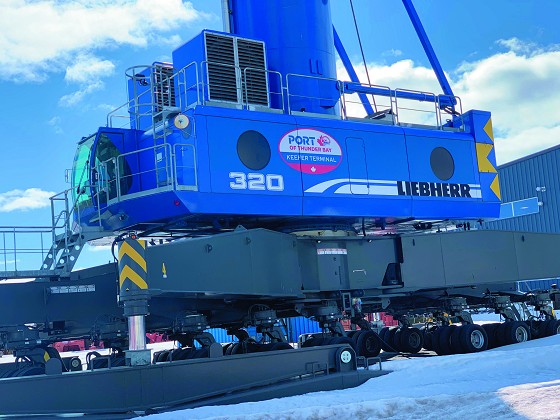
For the 2015 shipping season, the Port of Thunder Bay handled 8.9 million metric tonnes, ranking as the third-strongest year since 2000. In 2014, Thunder Bay Port Authority provided record financial results and led to the generation of $1.5 million from operations.
In 2011, Thunder Bay Port Authority received a $1 million NOHFC investment to acquire a new crane capable of lifting up to 104 tonnes of cargo between marine vessels and rail or truck trailers. In the Thunder Bay area, the NOHFC has invested about $181 million in 1,453 projects that have helped generate or retain more than 5,500 jobs since 2003.
Grain volumes increased by 500,000 MT in 2019, as Thunder Bay elevators funneled larger quantities of canola to markets in Europe and South America. Potash shipments remained above average for a third-straight year. Both the foreign and domestic vessel fleets contributed to the strong season in Thunder Bay; vessel calls and cargo tonnage for both fleets were up compared to the prior year. Three domestic vessels wintered at Keefer Terminal for seasonal refurbishment. The Port of Thunder Bay is projecting another strong season in 2020. Thunder Bay grain terminals continue to set the bar for efficiency, producing the fastest railcar and vessel turnaround times of all Western Canadian grain ports.
The NOHFC’s (Northern Ontario Heritage Fund Corporation) investments in the North’s transportation infrastructure are an important part of the Ontario government’s Growth Plan for Northern Ontario.
Thunder Bay Port Authority is a government business enterprise with a mission to promote and invest in the efficient integration of marine, rail, and road transportation systems and participate in the region’s economic development.
Background
The Thunder Bay Port Authority, formerly the Thunder Bay Harbour Commission and the Lakehead Harbour Commission is the organization responsible for the federal
interests at the Port of Thunder Bay. The Port Authority was created by the Canada Marine Act of 1997 and officially received its Letters Patent July 1, 1999. Thunder Bay Port Authority reports to Parliament through the Minister of Transport.
Responsibilities.
The Port Authority is empowered to administer, regulate, develop and promote the Port of Thunder Bay as provided in its Letters Patent. The following responsibilities are undertaken by the Port Authority within its Engineering and Operations program activity: Monitoring of shipping activity within the Port of Thunder Bay and collection of fees as provided in the Port Authority’s By-Laws; Development and leasing of lands and waterlots for the purposes set out in its Letters Patent; Operating Keefer Terminal, a multi-modal transportation and warehousing facility; Undertaking research and development related to port activities; Coordinating marine transportation security in consultation with the Port Security Committee; and promotion of the port and its public and private facilities and advocacy on behalf of marine interests.
The Canada Marine Act describes the corporate governance structure. The Act provides that a Chief Executive Officer must be in place and such other officials as may be required by the Directors may be retained. The Port of Thunder Bay is located at the head of the Great Lakes/St. Lawrence Seaway System, a dynamic navigable waterway that stretches 3,700 Kilometers, into the heart of the North American continent.
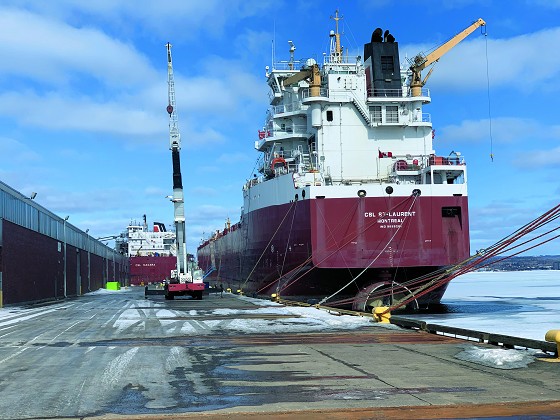
Port of Thunder Bay Mission Statement: To promote and invest in the efficient integration of marine, rail, and road transportation systems and to support economic development.
Top Hat Honours will be announced but ceremonies will not take place in order to prevent the potential spread of virus between participating parties.
Immerse yourselves in the diverse history, expansions and developments of our great port, Port of Thunder Bay.
I’ll be down on the docks, watching the ships come in!
Contact our Thunder Bay Port of Authority and let them know what an incredible job they are doing!
100 MAIN STREET THUNDER BAY, ONTARIO P7B 6R9
TEL: (807) 345-6400 | FAX: (807) 345-9058
Staff
Tim Heney, Chief Executive Officer tim@tbport.on.ca
Guy Jarvis, Director of Engineering & Harbour Master guy@tbport.on.ca
Mel Parker, Comptroller & Corporate Secretary mel@tbport.on.ca
Chris Heikkinen, Communications & Research Coordinator chris@tbport.on.ca
Christian Chukwu, Operations Coordinator christian@tbport.on.ca
Welcome to our future!
Exerts from:
https://www.canada.ca/en/transport-canada/news/2018/07/the-government-of-canada-invests-in-transportation-infrastructure-at-the-port-of-thunder-bay.html










